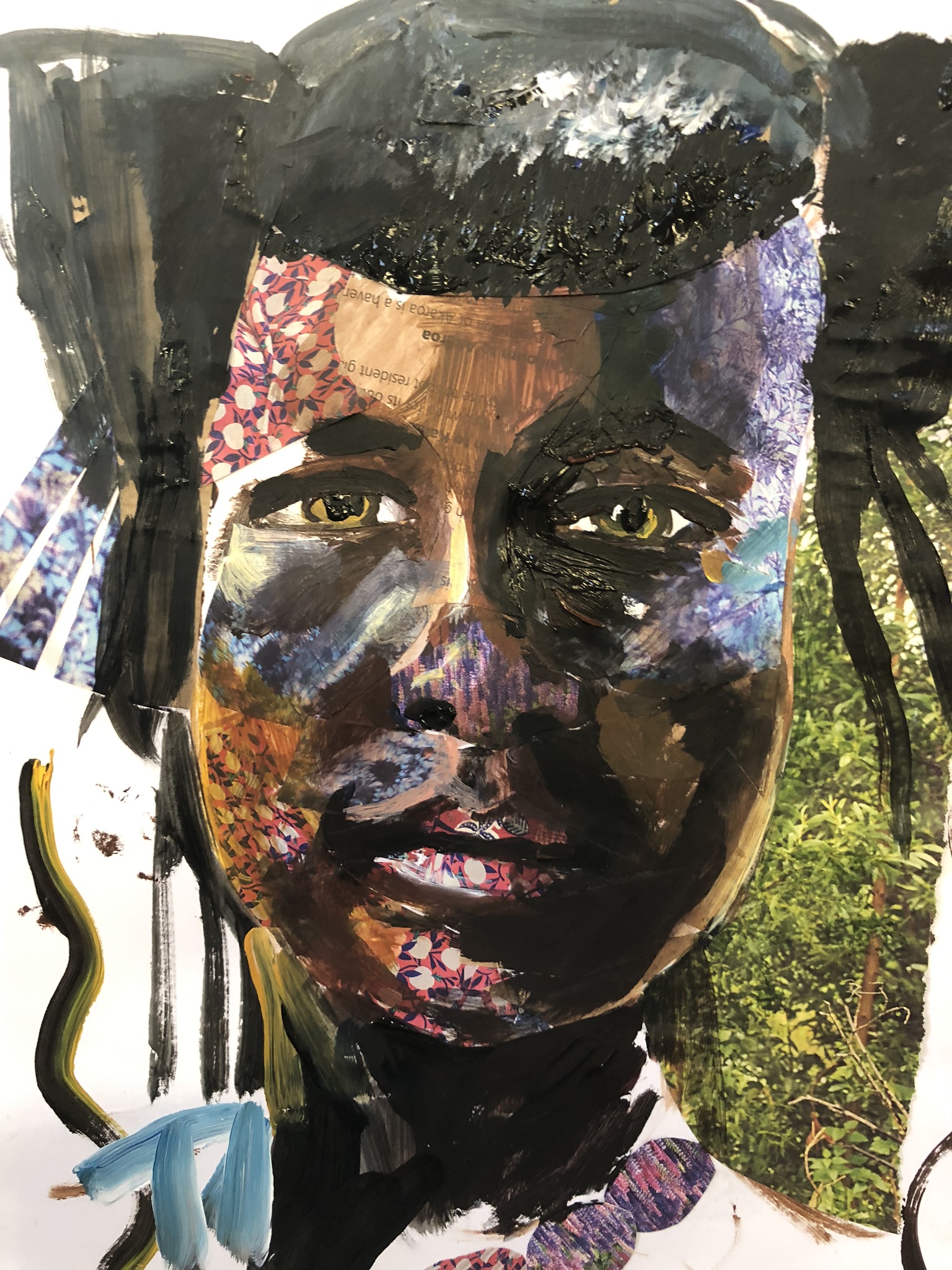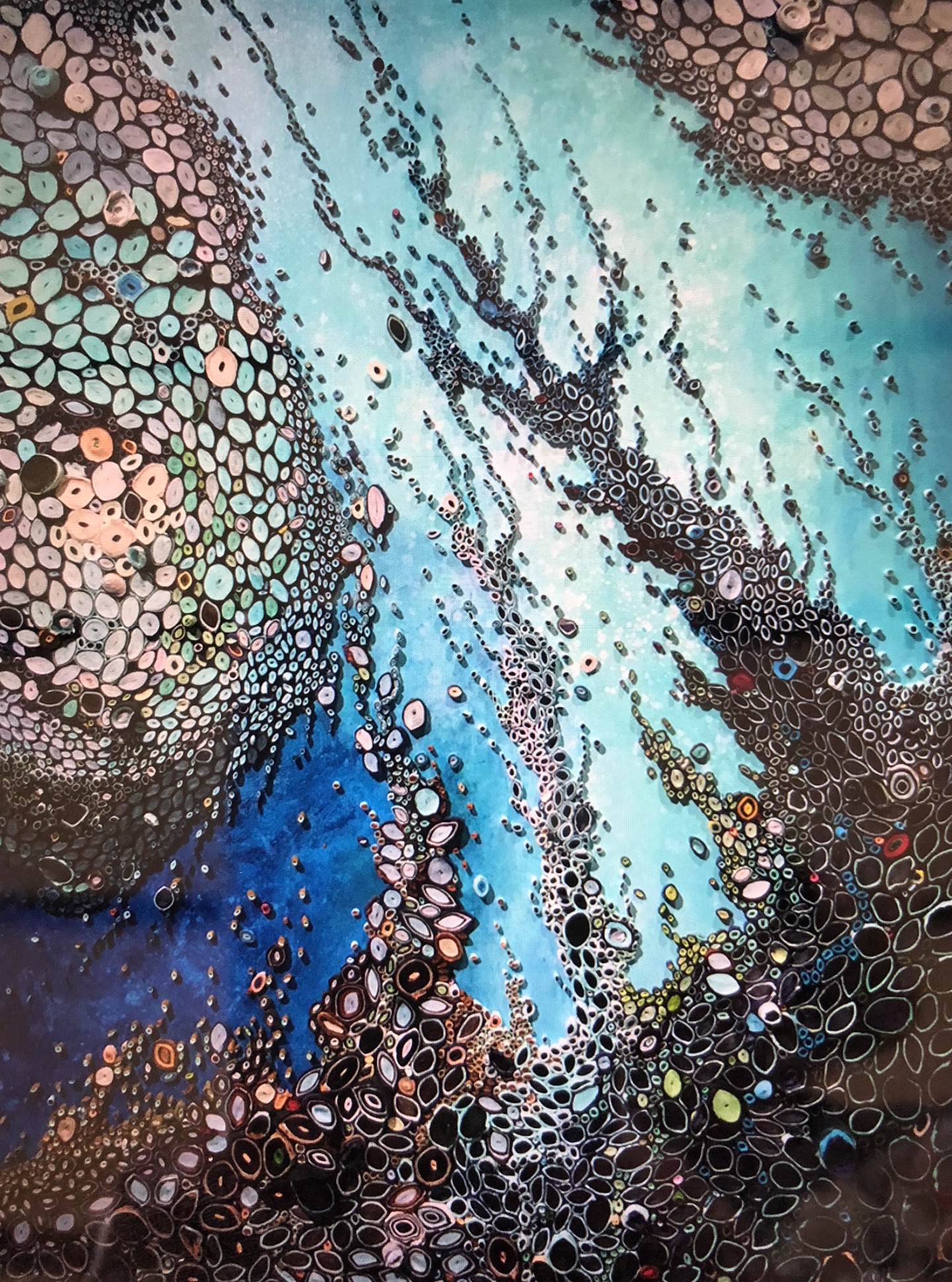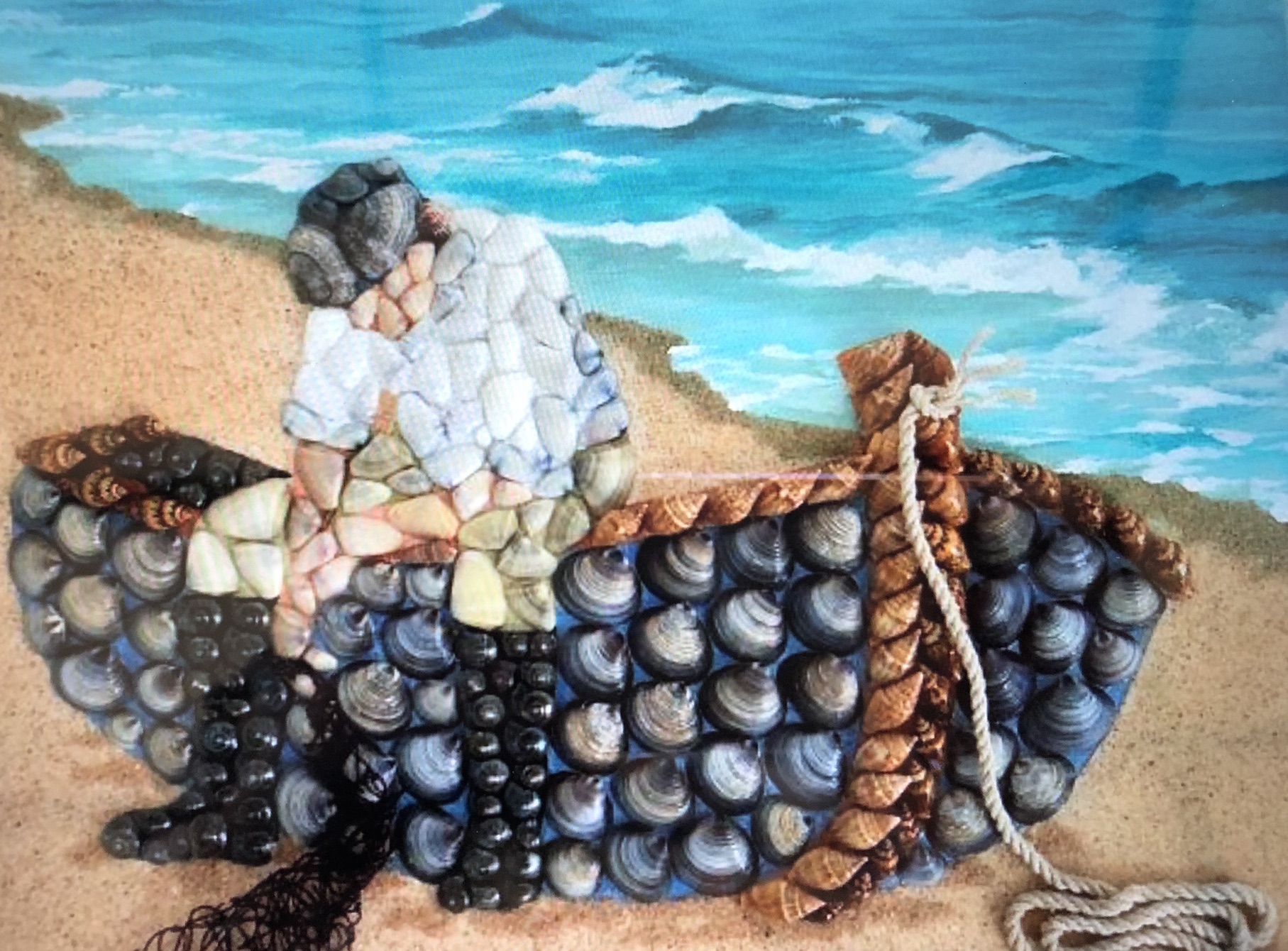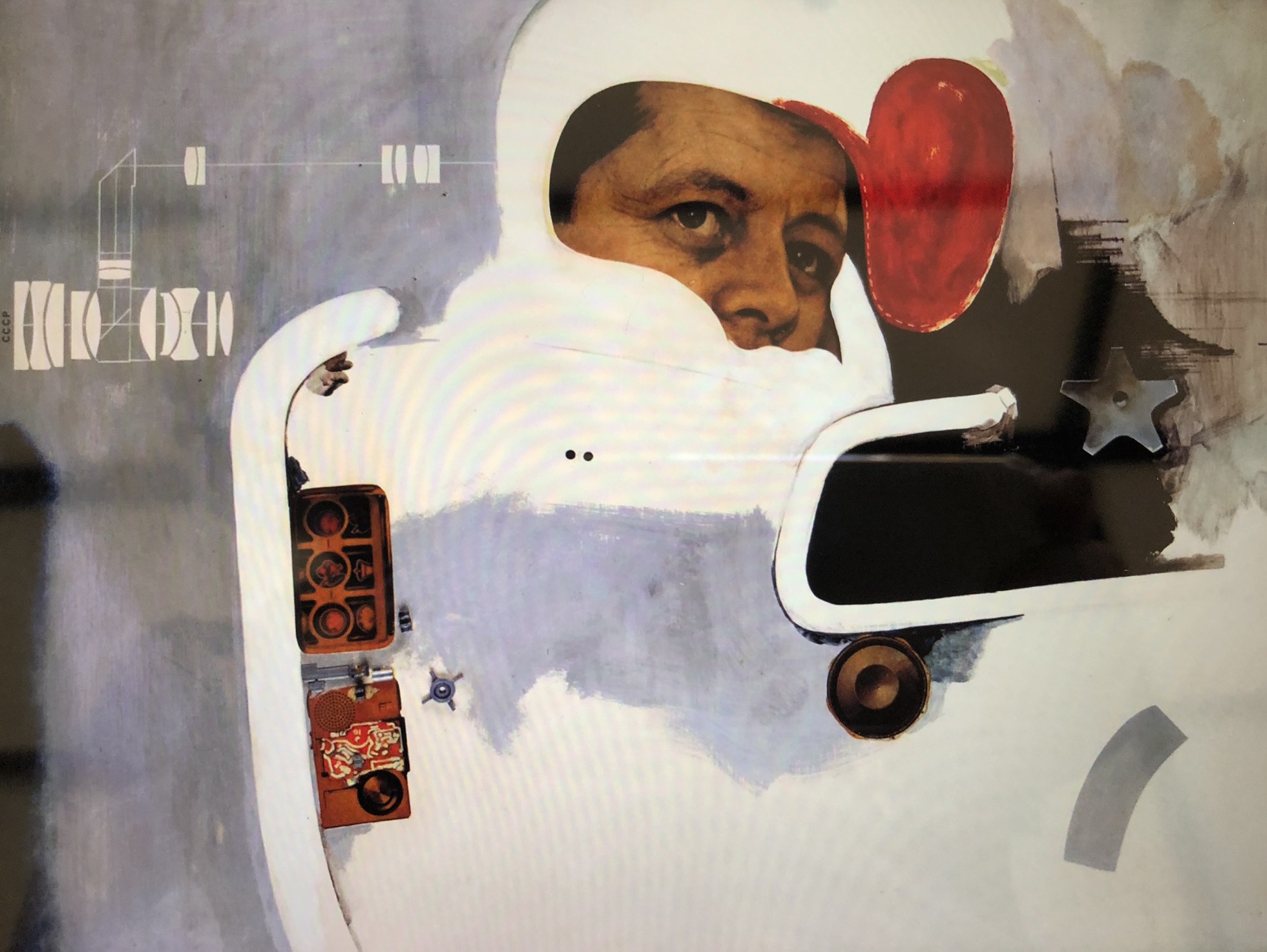Collage was first used as early as 1910 and Picasso did some collages.
Collage is a great way to add new dimensions to your paintings. The list of things you can use in collage is almost infinite, but here are some suggestions :-
Natural things like – shells, stones, pieces of broken glass, seeds , lentils, rice, dried beans or dried grasses –
just be careful not to use anything which might go mouldy.
Household things like – keys. zippers, jewellery, coins, washers, screws, bolts etc.
You can also use newspaper, wallpaper, gift wrap, sheet music and cut-outs from magazines. Note that it can be difficult to paint on top of any shiny magazine clippings.
You can either start your painting by using a lovely piece which inspires you and then incorporate this into your painting, or you can use the collage to enhance a painting or give an interesting background to it.
Caroline started with a striking photograph of a young african woman, then she selected cut-outs from magazines to add a lively dimension to her painting. The finished painting can be mostly collage or 50/50 or any proportion you feel works best. Once you have your theme it is best to choose items to use as collage which are related to it. Caroline recommends using wood glue to stick on your items as this is very strong and nothing will fall off when the painting is hung.
This was her photograph
She mixed up some thinned paint, diluted with some glaze medium ( this is a good chance to use up your cheap paints as they are low in pigment) and applied this on top of the collage so that the pattern showed through. She then continued to build up layers. How much paint you apply and how much collage you leave visible is entirely a personal choice. If you find that you have overdone the painting and not left enough collage you can always stick on some more.
Depending on the finish you are looking for you can paint over the finished artwork with glaze and varnish over the entire thing until it all takes on a solid look, or you may prefer to leave it textured.
Caroline said she would have added a little more collage but she didn’t have it to hand. She used scumbling to do the hair, which was very effective.
Here are some examples of collage and acrylic
The one above used small rolls of paper to great effect.
While this seaside scene is made up of different shells with sandpaper for the beach and the sea is painted.
This one is a more abstract work about the space programme of the sixties.
It may be a good idea to frame your finished work in a box frame to protect it.
.





